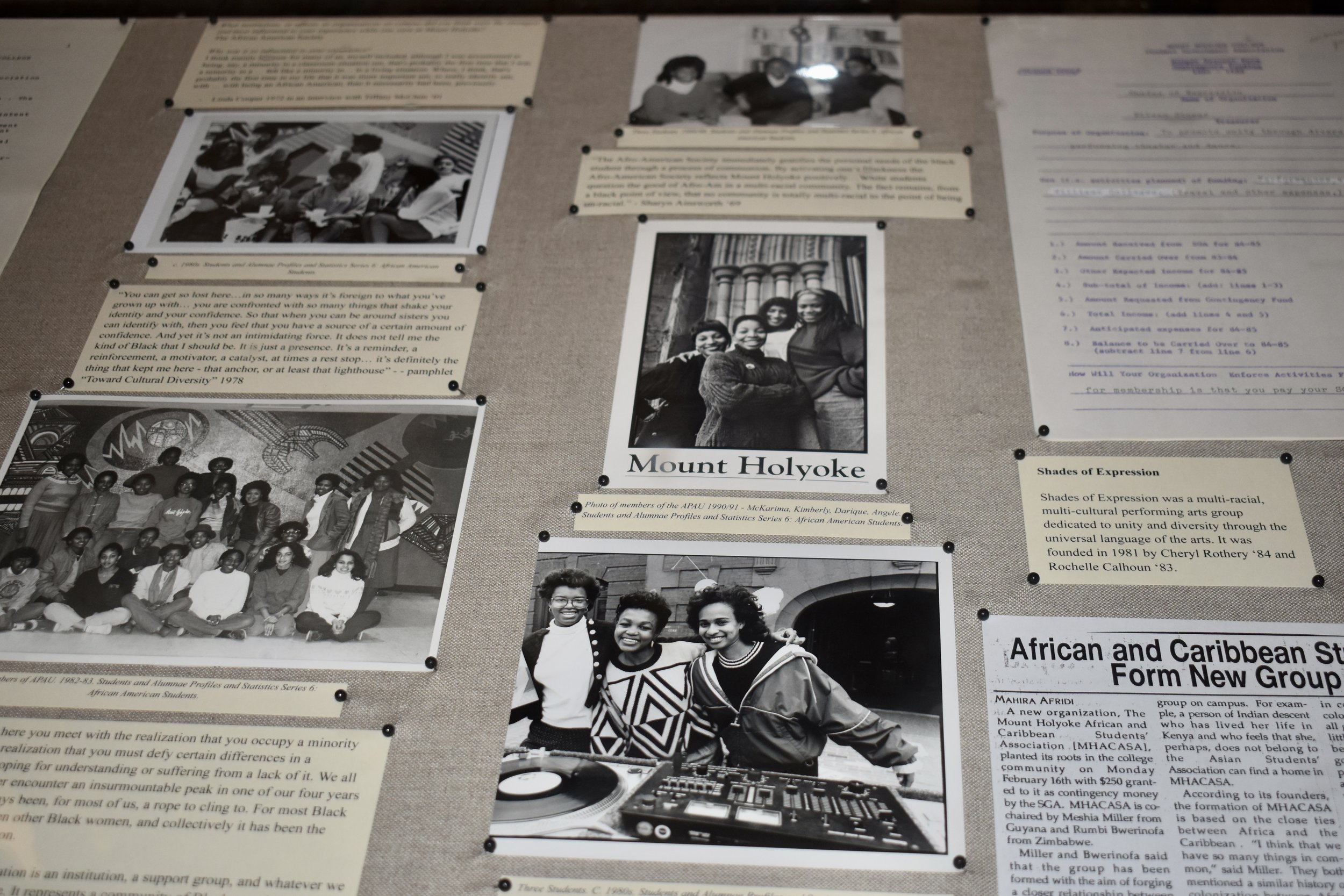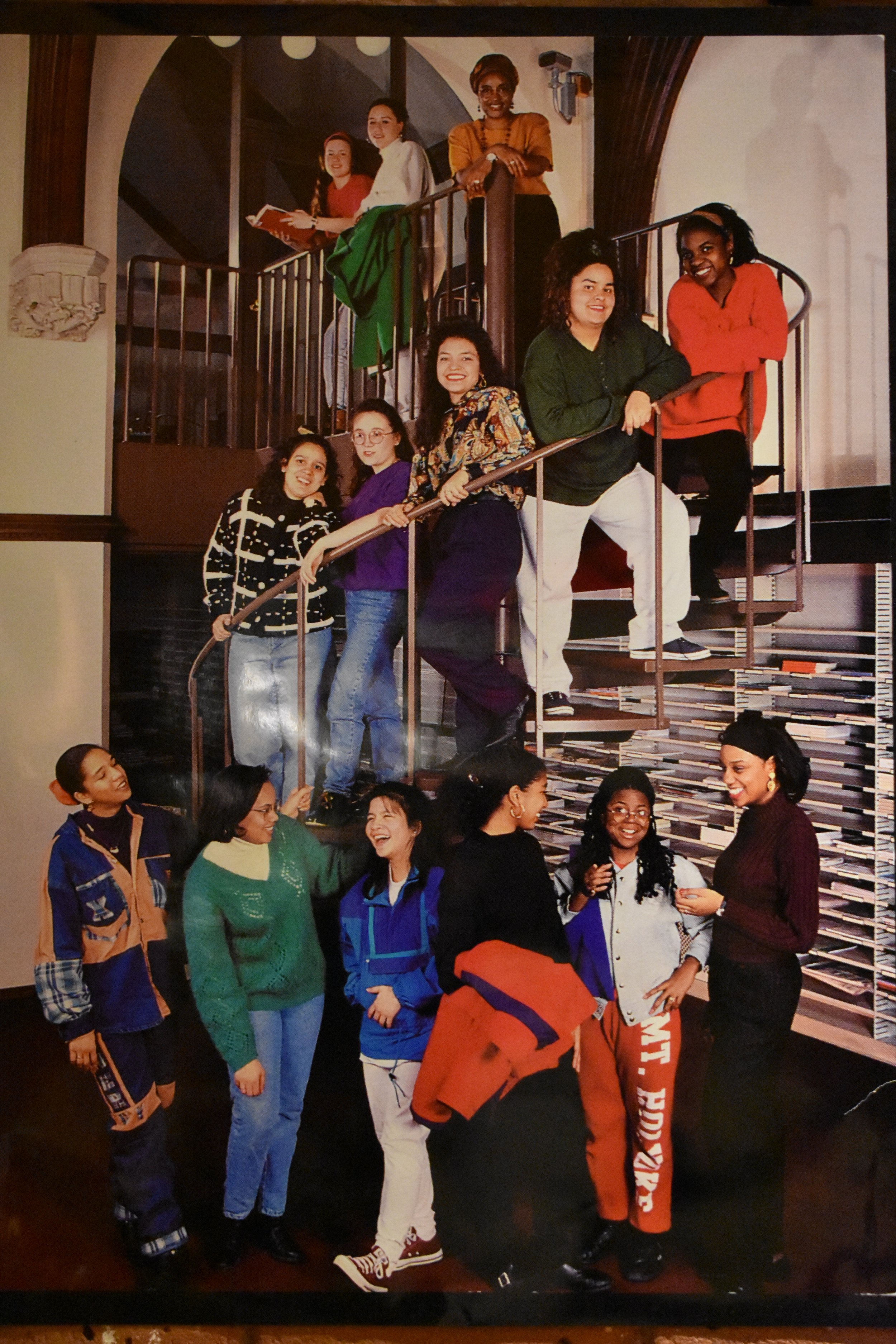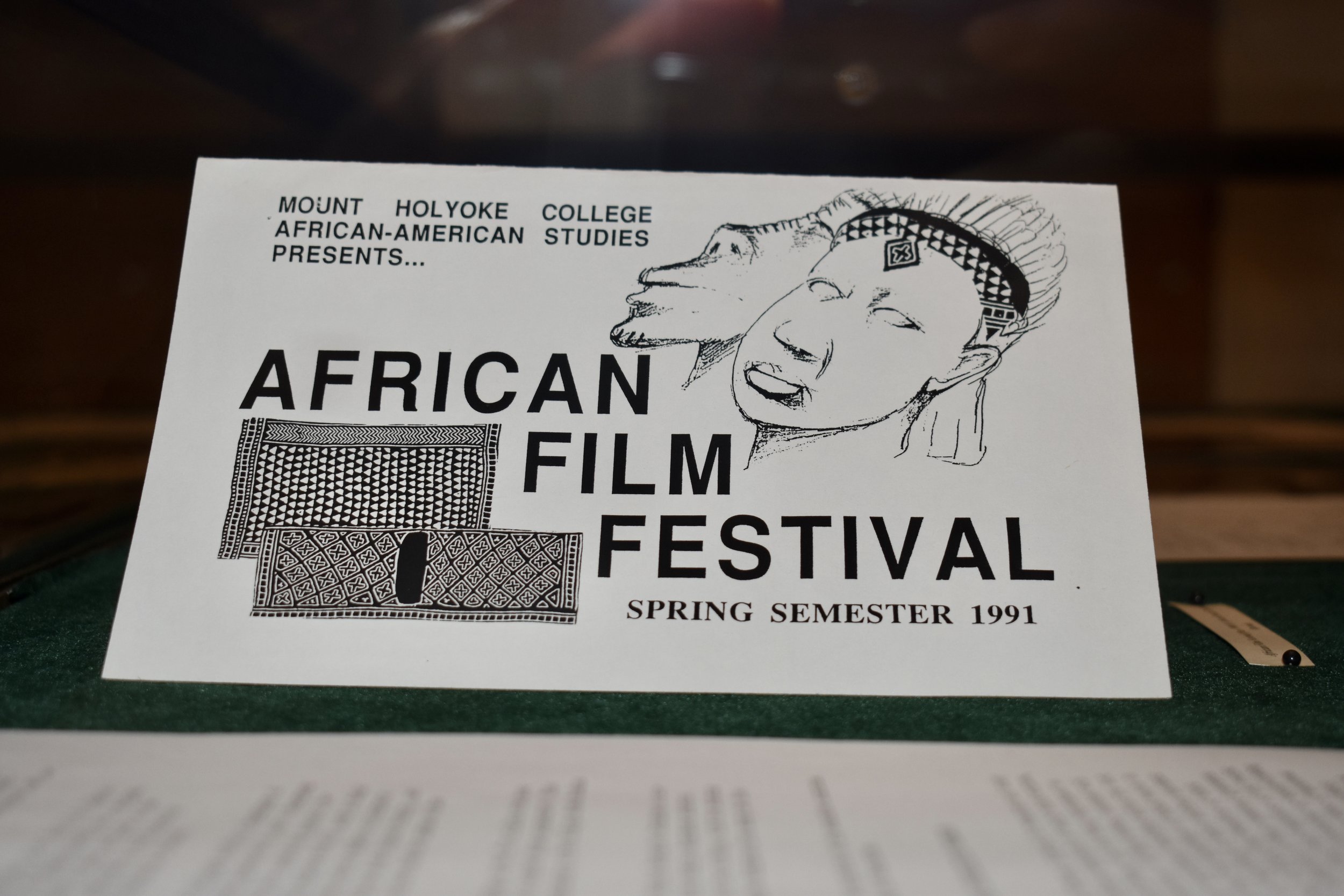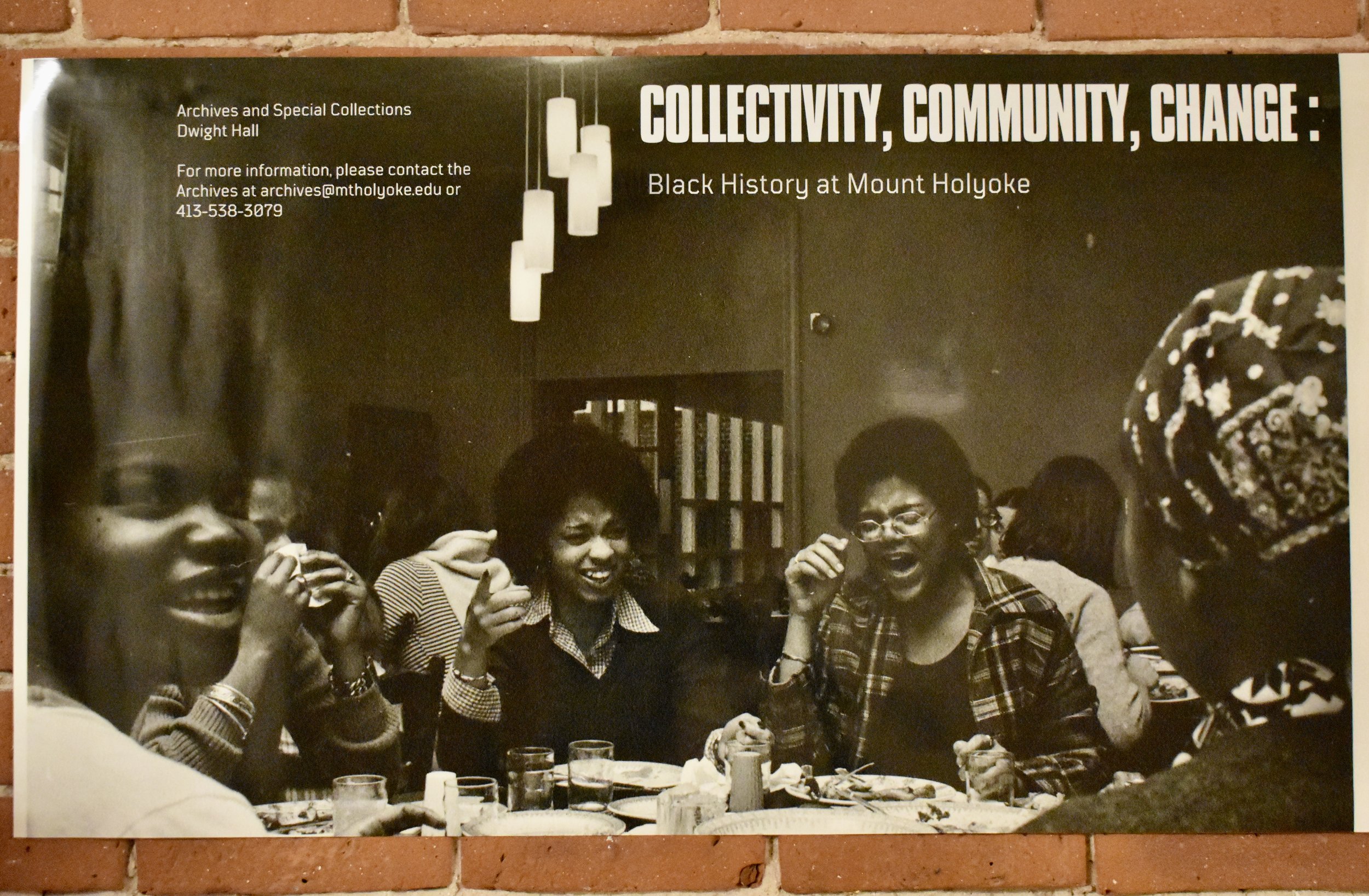Photo by Emma Quirk ‘26. Sign for the Collectivity, Community, Change Archives Exhibit.
By Emma Quirk ’26
Photos Editor & Staff Writer
A new installment in Mount Holyoke College’s Archives will honor the contributions of Black community members to the College and the world at large.
“Collectivity, Community, Change: Black History at Mount Holyoke” is a new exhibit that opened to the public at the beginning of September. Curated by Sarah Lancaster ’22, the former post-baccalaureate archives assistant, the exhibit emphasizes how the “history and legacy of the Black community at Mount Holyoke is rich and multifaceted” and full of “leadership, community, activism and achievement.”
The creation of the exhibit began with President Danielle Holley, who approached the Archives with the idea to spotlight the history of Black students and faculty at the College. “President Holley reached out to the archives [with] the goal … to highlight the fact that there is a long and rich history of Black life and leadership at this college that began far before today,” Lancaster said.
The exhibit is split into seven sections: “Who Were the First Black Students at Mount Holyoke?”; “Experiences in 1930s-1950s”; “Creating Black Community”; “Activism on Campus”; “Academics”; “Expression of the Mount Holyoke Experience”; and “Building on the History and Legacy of Those Who Came Before.”



Photos by Emma Quirk ‘26. (Left to Right) A collection of photos and documents from the exhibit, a photo from the Archives exhibit, circa the 1990s, showing members of ALANA and an advertisement for an African Film Festival from the African-American Studies department, circa spring semester of 1991.
“First Black Students” underscores the College’s initial unwillingness to admit Black students. The first two were admitted without their racial identity being known, and by 1950, only 23 Black students had graduated.
This section of the exhibit not only focuses on the College’s discrimination but also features the experiences of 12 Black alums at Mount Holyoke between 1878 and 1958. They were interviewed in 1973 as part of the history course “Black and White Americans.”
The accomplishments and personal experiences of several Black alums are highlighted, including Hortense Parker ’33, who graduated in 1833 as valedictorian of her class; Laura Lee Spencer ’36, who co-founded the Social Problems Club and helped bring Black speakers to campus; and Katherine Butler Jones ’57, who founded the Metropolitan Council for Educational Opportunities Program, which saw students of color from Boston enrolled in Newton public schools and continues its work to this day.
Lancaster was particularly excited about these interviews.
“My favorite part [of the exhibit] is the profiles of early alums. I loved reading the interviews that students in the 1970s did with early Black alums,” she said. “I like including the experiences of people in their own words, and the interviews really make the history personal and relatable.”
“Creating Black Community” highlights the emphasis on creating connection and support between Black students and alumni that marked the 1960s and 1970s, along with efforts to encourage the admission of more Black students. During this time, six different student organizations were created, including the Afro-American Society. Today, it is known as the Association of Pan-African Unity.
Reflecting on her own time at the College, Lancaster noted the importance of community, leadership and activism. “A large part of my Mount Holyoke experience was the sense of community and the active part students played in shaping campus life. Student leadership and activism has been important to Mount Holyoke’s culture for a long time,” Lancaster said. “In this exhibit, I wanted to focus especially on the student experience throughout the years. I think there is a lot to be said for the power of student engagement and activism in creating change.”
Lancaster’s desire to focus on the student experience and student action on campus is evident throughout the exhibit. In the “Academics” section, the creation of the African American and African Studies department — which now consists of the Africana studies minor and critical race and political economy Africana studies pathway — and the hiring of Black faculty members are examined. It states that the department was created due to student activism and protests during the 1970-71 school year.
This section features profiles of five faculty members, including Psychology and Education Professor Frances Kerr, the first Black professor hired at Mount Holyoke, and Shirley Chisolm, the first Black woman in Congress and a professor of sociology and anthropology at the College. Chisolm is the namesake of the Shirley Chisholm Living Learning Community for students who are of African descent or identify with the African diaspora.
The final sections of the exhibit, “Expression” and “Building on the History and Legacy of Those Who Came Before,” bring together sentiments from students in the 1960s and 1970s with more recent ones. It includes reflections on the experiences of Black students and other students of color in the Mount Holyoke News and other student publications from the 1990s and 2000s. “Building on Legacy” also examines the creation of cultural houses, Living Learning Communities and the annual Building On Our Momentum Conference.
Reflecting on legacy and history allows us to look to the present and future. “While a lot has changed since Hortense Parker attended, I think a recurring theme in the exhibit is the desire of students for increased representation, broadened education and being heard,” Lancaster said. “That holds true both 100 years ago and today.”
Everyone is welcome to view the exhibit in person at the Archives or virtually through the Archives and Special Collections Digital Exhibits.

